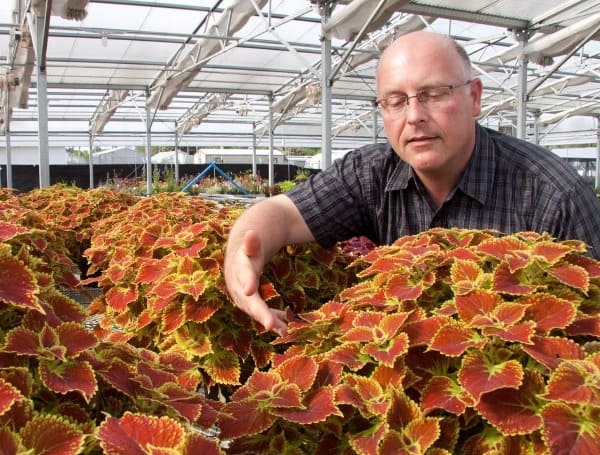If you give mom a plant for Mother’s Day, you might appreciate the aroma and aesthetics of the flower you bought – and flora in general. You might ev
If you give mom a plant for Mother’s Day, you might appreciate the aroma and aesthetics of the flower you bought – and flora in general. You might even wonder how the plant got to the retailer or nursery in the first place.
Many plants arrive at the store after much research. University of Florida scientists toil in labs and fields for years to breed top-notch ornamentals for Mothers’ Day – or any occasion.
Mother’s Day is May 9, and flowers or plants are among the most popular gift sons and daughters give their moms. UF/IFAS researchers in the environmental horticulture department are constantly seeking to make plants prettier and easier to care for, whether it’s a caladium, gerbera, lantana, coleus and others, to make your flower and plant buying choices better.
Three rock-star UF/IFAS scientists work to grow and/or breed ornamental plants:
- David Clark at the main UF campus in Gainesville.
- Zhanao Deng at the Gulf Coast Research and Education Center (GCREC).
- Alfred Huo at the Mid-Florida Research and Education Center (MREC).
Clark is known for his coleus cultivars. Coleus is a garden plant. Over 100 million UF/IFAS-bred have been sold in four continents, with over 20 million sold last year alone.
“I like breeding coleus because we have a continuous pipeline of new genetics and access to all major markets, so what we do this year is usually on the market within two to three years,” Clark said. “We estimate that our plants have created almost $500 million in farm-gate value (value of the product as it’s sold at the nursery). The best part, to me, is that I see them everywhere I go in the United States during the summer.”

CREDIT: “UF/IFAS photography.”
Clark’s favorite coleus cultivar thus far is ‘Redhead’ because it was named after his wife, who’s a redhead, and it has been the most famous and most-sold cultivar from his program.
“We have now released 98 cultivars since 2006, so I always have a new favorite each year,” Clark said.
Deng and his team work on several ornamental plants including caladium, gerbera, impatiens, lantana, and petunia. They have developed and released more than 20 new caladium cultivars, three sterile lantana, and several gerbera cultivars.
“Caladiums are very special to Florida,” said Deng, who added that GCREC has been breeding caladiums for decades. “They originated from the Amazon river region, and they have settled in Florida for almost a century now. They have become a signature crop in Florida.”
“Florida has been the only source for caladium bulbs in the world, satisfying the needs of greenhouse growers, nurseries, landscapers, and consumers in the Sunshine State, around the nation, and globally,” he said. “Consumers are always looking for pretty plants that are easy to grow, care for, can do well, and last long. Caladiums meet these requirements.”
Deng described plant breeding this way: “New cultivars are like a plant breeder’s baby. I am passionate about many of my new cultivars. Last year in the midst of the COVID pandemic, we introduced five new caladium cultivars, Crimson Skye, Dots Delight, Lava Glow, Pink Panther, and White Lightning.”
At MREC in Apopka, Huo works on snapdragons and begonias.
“Snapdragon is a top 10 cutting and potted flower,” said Huo. “It has gained more popularity in the world in the past five years. Snapdragon is grown as an annual flowering plant. However, it is very sensitive to temperature, drought and light quality.”
Huo and his lab combine conventional breeding and cutting-edge techniques – for example, genomics and genome editing — to develop heat- and drought-resistant varieties with a range of flower size and color, novel varieties that can be grown indoors, varieties that do not require long days, dwarf-type and stress-resistant varieties.
“We are developing heat- and drought-tolerant begonias that can be used in Florida year-round,” Huo said. “Two hybrids are under trial tests. Hopefully, that can be released in 2023. The begonia can be used as a basket plant or backyard bedding plant for home gardeners.”
Ag News: Friends, Neighbors Help Influence Our Irrigation Decisions, UF Research Shows

COMMENTS